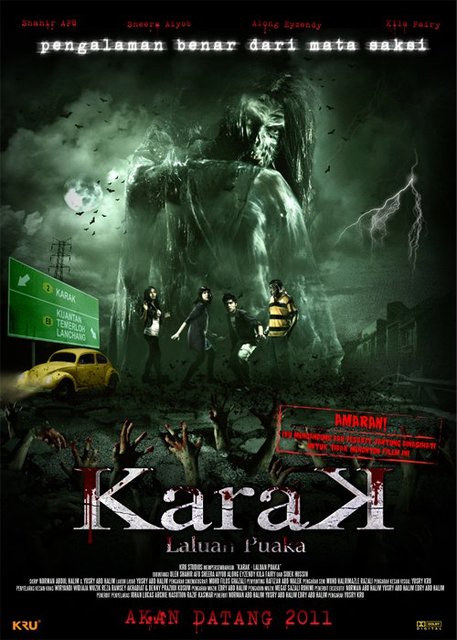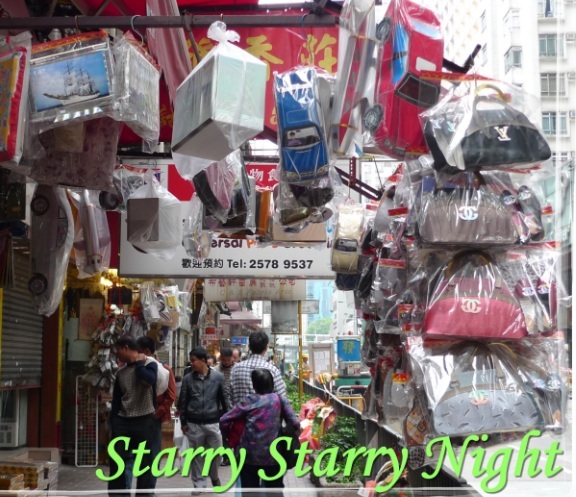The highway was built in the 1970s; originally intended as an alternative route from Gombak to Bentong in Pahang; using the Federal route.
The costs of the construction was rather high and tolls were then implemented to help to cover for the costs of the highway.
The Karak highway was notoriously known for its many haunting stories, told by the many eyewitnesses who drove on the highway.
There were just so many stories which emerged; and so many had been heard.
The highway garnered much attention due to the high number of accidents which took place on the highway, thus giving way to the rumors about the origin of the highway location and also the road being haunted.
There were a few rumored sources as to the reason for the hauntings on the infamous expressway:
1. The grounds on which Karak highway was built upon was said to be the burial grounds for the aborigines (also known as Orang Asli in Malay) or the settlement of the aborigines.
2. The number of accidents happening here since its establishment
The notorious reputation for which Karak was known seemed to turn it into a fearful area for motorists especially during the night due to the many stories shared by motorists who have experienced some of the hauntings while travelling along the highway.
The following are the few stories that I have gathered from some research and readings on this highway:
Story 1 (the most common/popular version of the haunting on Karak)
(I am not sure about the validity of this story or whether it really took place on Karak)
There was once a couple with a baby travelling on the highway at night. It was during the festive season, and they chose to travel during the ungodly hour to avoid massive traffic jams to reach home. Little did they know that their decision was about to change their lives forever.
As it was late at night, the roads were quiet along the lonely and deserted stretch.
It was at that time that their car broke down, finally giving way to the continuous jerks and weird noises for a while.
The husband was surprised as the car had been inspected and ensured to be in good condition prior to the travel.
As the road was rather deserted at that hour and barely a passing vehicle could be spotted, they were unable to get help. The husband then decided to get out of the car to check on the car instead of just waiting in the car as it was still a long way to dawn.
He told the wife to stay inside the car with the child and to keep the doors locked at all time and not to budge even if she heard sounds from the outside.
He got down from the car, and walked a little to see whether he could find any petrol station or house nearby.
The wife waited patiently in the car, but after what seemed like a long time, she started to worry for her husband's safety. The child was also crying and that made her restless.
At the same time, a car was passing by and it slowed down but sped off after passing her car. It was a police car, she noticed and the car stopped a few metres in front and the policemen got out with a loudspeaker and shouted for her to get down slowly and walk towards them and not to look back.
She was unsure of what to do, but she obeyed the orders of the policemen anyway, and got down with her child.
As she reached the police car, she turned back out of curiosity, and it was then she saw the most horrifying sight; her husband was headless on the top of the car, and there was a creature which was feasting on him.
The police hurried her into the car and sped away.
Story 2: The Yellow Volkswagen
There were reported sightings of a yellow volkswagen on the highway. It could be appearing from nowhere, sometimes no driver was spotted in the car!
The yellow car could be driving slowly on the right lane, thus making others try to overtake it. When you overtake it, you would realize that there is no driver in it!
Other instances could be the car would try to speed up once it had been overtaken by you and then disappear just like that out of your sight.
Most motorists have been warned to not overtake the car or it will keep appearing in front of you like the above stories.
Story 3: Sighting of Pontianak
There have been reported sightings of a pontianak (means female vampire in Malay) flying on the highway at night. The pontianak is believed to be a woman who had died of childbirth and harbors immense hatred and anger. She preys on men and is said to tear their organs apart. Pontianak could come in the form of a beautiful young woman in white to seduce the men.
Some motorists claimed to have seen a beautiful woman on the highway who could sometimes make heads turn (literally) and she could be by the side of the road, asking for a lift.
Whatever it is, it is wise to apply common sense when you are traveling along a quiet road at night and drive on instead of stopping when a lady or whoever is spotted for safety reasons. Even if they are not ghosts, they may be robbers in disguise too.
Story 4: Sighting of a small boy
A little boy had been spotted on the highway. He could appear at the side of the road, and seemed like he is looking for something. The next thing you know, he could be appearing next to the car and running along it; even if you are travelling at 110km/h. The boy would be asking the same question over and over again, "Have you seen my mother?"
Word has it that the boy and his mother was involved in one of the many accidents that took place on the highway and both were killed. Their bodies could have been thrown into different locations, separating the mother from her son and thus the little boy's restless spirit is constantly looking for his mother.
There are many more stories from the infamous highway which I probably didn't know about but these are the more popular ones.
It was perhaps this notoriety about the hauntings which attracted the interest of the local filmmakers in Malaysia to produce a film on the highway itself.
Produced by KRU, who were originally a talented group of three brothers in a band now turned filmmakers and producers, the movie Karak: Laluan Puaka is scheduled for release this month; 26th May 2011 and is said to include the different stories about Karak into this horror epic.
The plot of the story is about four young college students on their way back to their university from their hometown and trying to avoid the traffic jam on the major highway, they decided to re-route their journey towards the old trunk road passing by the Karak town.
It was not the wisest decision of their lives as this was about to change their lives forever.
The rest, is for you to find out when the movie is released this 26th of the month...
Watch the official trailer here:
For more information on the movie, check out their official website
The movie would probably be able to give more insights into the stories on the Karak hauntings, as it combines all the stories from the experiences of the eyewitnesses after extensive research by the production team and from the trailer, it looks good :)
I am proud of our Malaysian talents and also the movies made to introduce our country to the world, albeit through the horror genre, but nevertheless, a good start.

